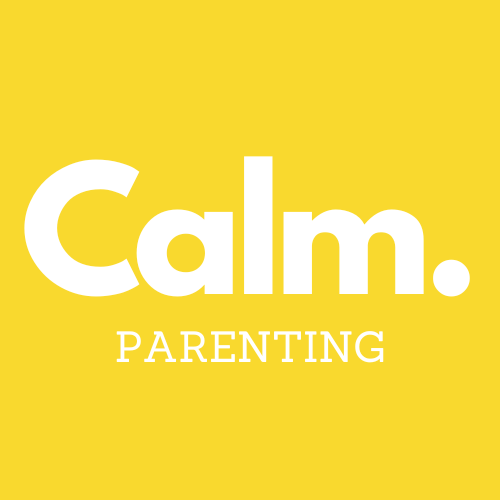Parenting is tough, and if you’re reading this, you’ve likely experienced moments when frustration gets the better of you. Yelling might feel like the only option when your child is refusing to listen or your patience has been stretched thin. But you probably also know that yelling doesn’t lead to better behavior—in fact, it often escalates the situation. The good news is, there are proven ways to stop yelling and start fostering a calm, connected relationship with your child.
This guide will provide actionable strategies you might not have tried before, so you can reclaim your calm and create a more harmonious household.

Why Yelling Happens: Understanding the Triggers
To address the problem, it’s essential to understand why it happens. Yelling often comes from:
- Stress overload: Work, household duties, sleep deprivation, unbalanced diets, kids activites or juggling them all together. Parenting can leave you mentally and emotionally drained.
- Unrealistic expectations: Expecting instant compliance or perfection from your child can set the stage for disappointment.
- Unprocessed emotions: Sometimes, we project our own unresolved stress or anger onto our kids.
When we yell, it’s usually because our “fight-or-flight” response kicks in. To change this, we need to focus on calming our nervous system and developing healthier responses.
7 Strategies to Stop Yelling and StayCal
Here are my 7 Effective Strategies to stop yelling and calming down
1. Pause and Breathe Before Responding
It sounds simple, but intentional breathing can interrupt your stress response.
- How to do it: When you feel your anger rising, stop and take three deep breaths. Breathe in for four counts, hold for four counts, and exhale for four counts.
- Why it works: Deep breathing activates your parasympathetic nervous system, helping you feel more grounded.
THINK: Is it an emergency? 99.9% of the time no, your child isn’t about to cause themselves or others harm. Take that time to pause and change the outcome.
2. Create a “Calm Down Plan”
Planning ahead for stressful moments can help you stay composed.
- How to do it: Write down a list of calming actions you can take (e.g., stepping outside, drinking a glass of water, counting backward from 10). Post it in a visible spot for easy reference.
- Pro tip: Practice these calming techniques when you’re already calm so they become second nature during tense moments.
3. Reframe Your Perspective
Instead of seeing your child’s behavior as defiance, try to understand what’s driving it.
- How to do it: Ask yourself, What does my child need right now? Are they tired, hungry, or overwhelmed?
- Why it works: Shifting from blame to curiosity helps you approach the situation with empathy, reducing your emotional reactivity.
Remember: As your children grow there are different milestones they will cover that require special attention and guidance. These fluctuations in your child’s behavior and habits do not reflect on you. Your job as their parent is to stop taking your child’s growth and development personally. All kids yell, scream and test boundaries. Continue with consistent messaging and calm approach to tackle your child’s needs.
4. Practice the “Whisper Technique”
It might sound counterintuitive, but lowering your voice can have a powerful impact.
- How to do it: When you feel like yelling, lean in and speak in a calm, firm whisper.
- Why it works: Whispering forces your child to pay closer attention, and it keeps your own emotions in check.
5. Use Visual Reminders to Stay on Track
Visual cues can help you stay mindful during stressful parenting moments.
- How to do it: Wear a bracelet, sticky note, or phone wallpaper with a calming affirmation like, “Connection over correction” or “I choose calm.”
- Why it works: A simple reminder can disrupt your automatic reaction and redirect your focus.
6. Model Emotional Regulation for Your Kids
Children learn how to manage emotions by watching you.
- How to do it: Narrate your feelings aloud in a calm way: “I’m feeling frustrated, so I’m going to take a moment to breathe.”
- Why it works: Not only does this help you regulate, but it also teaches your child healthy coping skills.
7. Prioritize Self-Care and Downtime
You can’t pour from an empty cup. Parents who neglect their own needs are more likely to lash out.
- How to do it: Schedule time for activities that recharge you, whether it’s a morning walk, journaling, or a coffee date with a friend.
- Why it works: Taking care of yourself reduces stress and increases your patience threshold. Make it regular!
8. Preparing for sucess
Once you know potential anger triggers, plan ways to avoid or cope with them. Here some ideas:
- Busy day tomorrow: what can you plan in advance? could you go to bed earlier?
- Make sure you plan ahead to schedule in self care
- Schedule in quiet times at home so your socialization and activites don’t become overwelming
This ones an important one! ROUTINE. Family structure looks different in every family but if everyone knows what to expect it makes for a smooth household. Read about creating your own routine here
What to Do After You Yell
Listen, mistakes happen. So if you do yell, it’s important to repair the relationship with your child.
- Acknowledge it: Say, “I’m sorry for yelling. That wasn’t the best way to handle my frustration.”
- Reconnect: Spend quality time together to rebuild trust.
The Long-Term Benefits of Calmer Parenting
When you stop yelling and focus on staying calm, you’ll notice changes in your household:
- Stronger bonds: Your child will feel safer and more connected to you.
- Improved behavior: Calm responses teach kids self-regulation skills they can carry into adulthood
- Better well-being: Both you and your child will experience less stress and more joy.
Calmness comes from within, it is not external. You need to work on coping with triggers in order to be a calm parent. It is not easy following gentle parenting principles on a day-to-day basis and many people think gentle parenting is permissive parenting, but this could not be further from the truth.
Changing your reactions won’t happen overnight, but every small step counts. By implementing these strategies, you’re not just breaking the cycle of yelling—you’re building a foundation of love, trust, and understanding that will last a lifetime.
What strategies do you use to maintain calm in a stressful situation? Leave me a comment below on your experience with peaceful parenting
Take a deep breath. You’ve got this!


One response to “How to Stop Yelling and Start Calming Down as a Parent: 7 Effective Strategies”
Hi, this is a comment.
To get started with moderating, editing, and deleting comments, please visit the Comments screen in the dashboard.
Commenter avatars come from Gravatar.